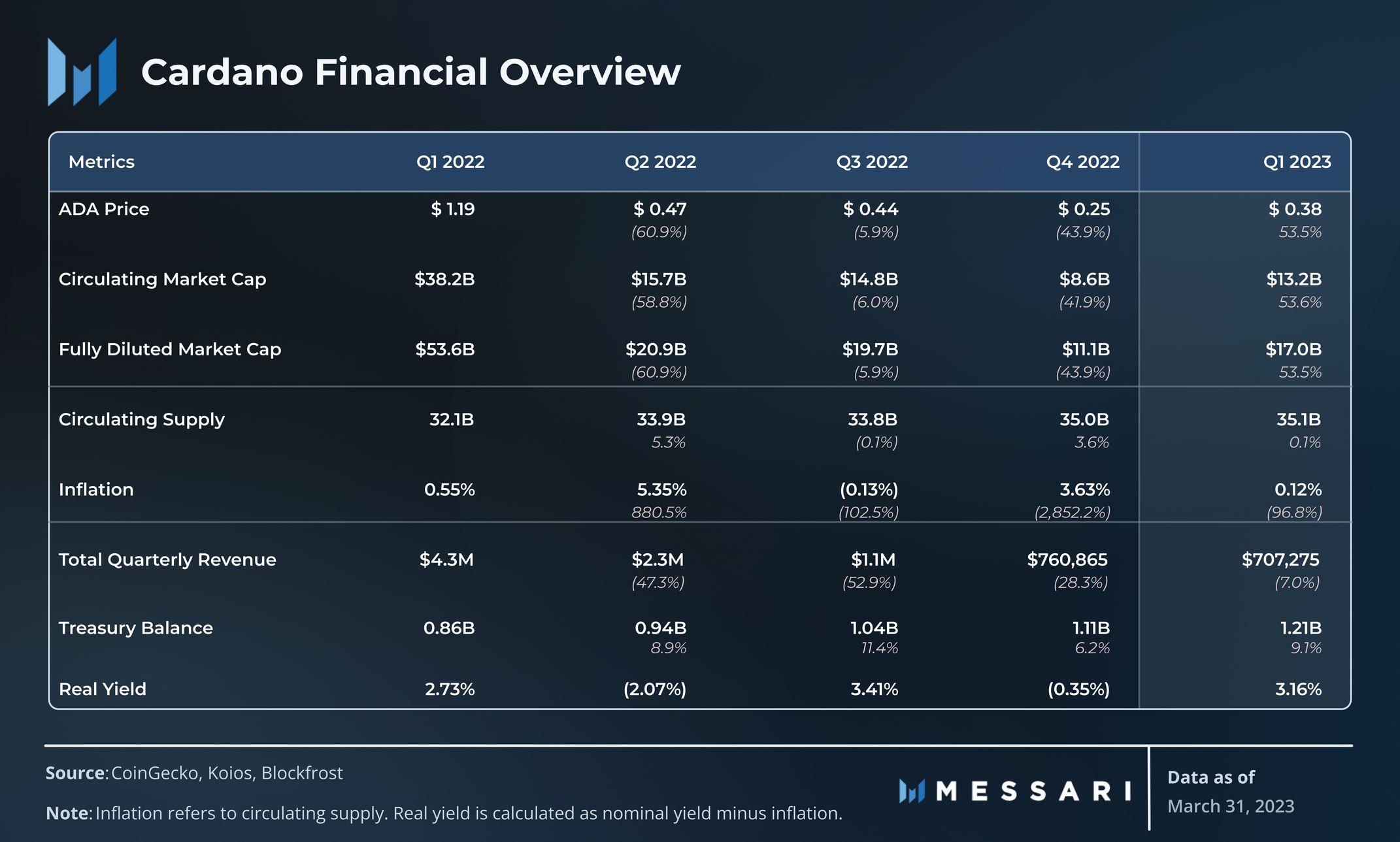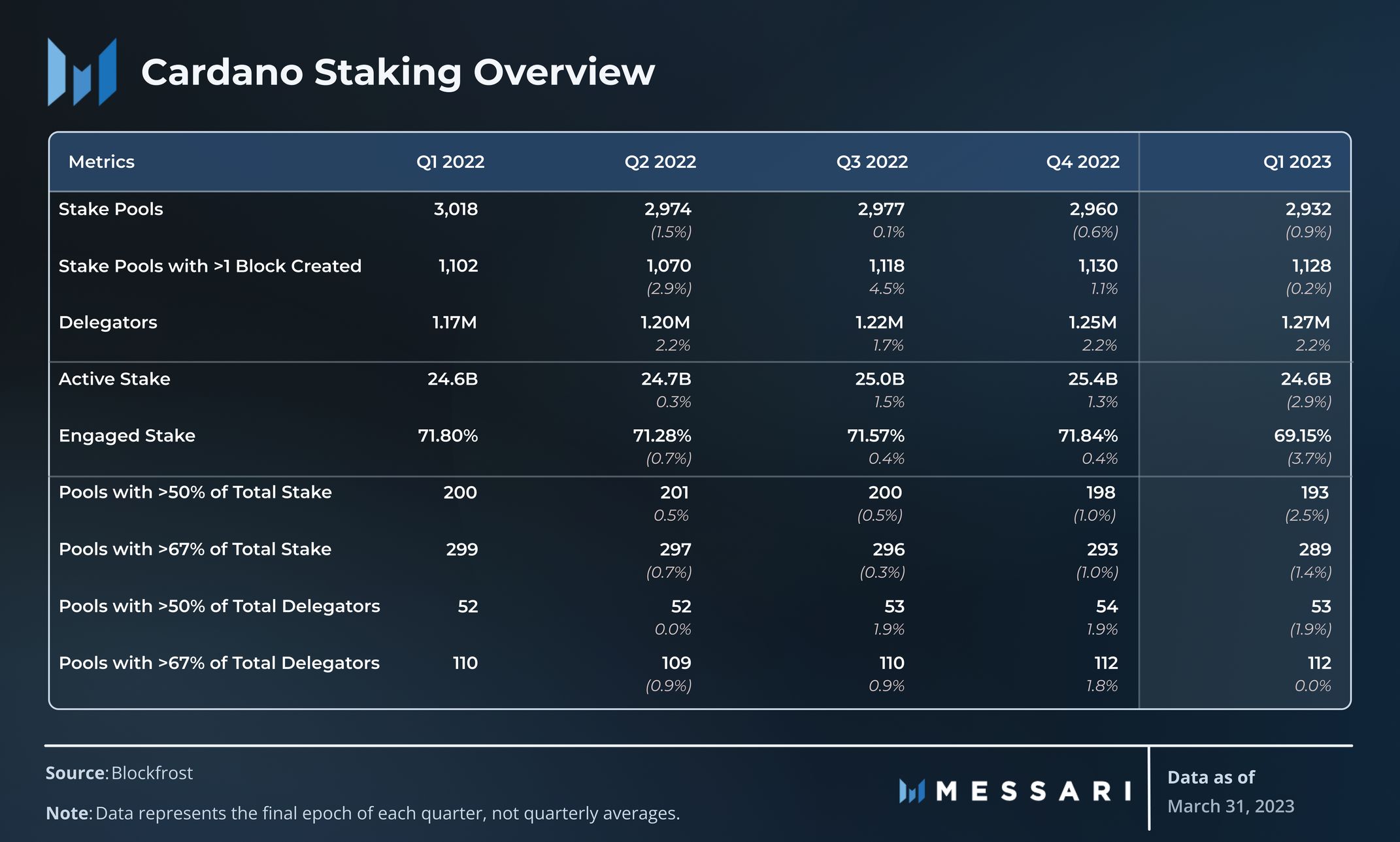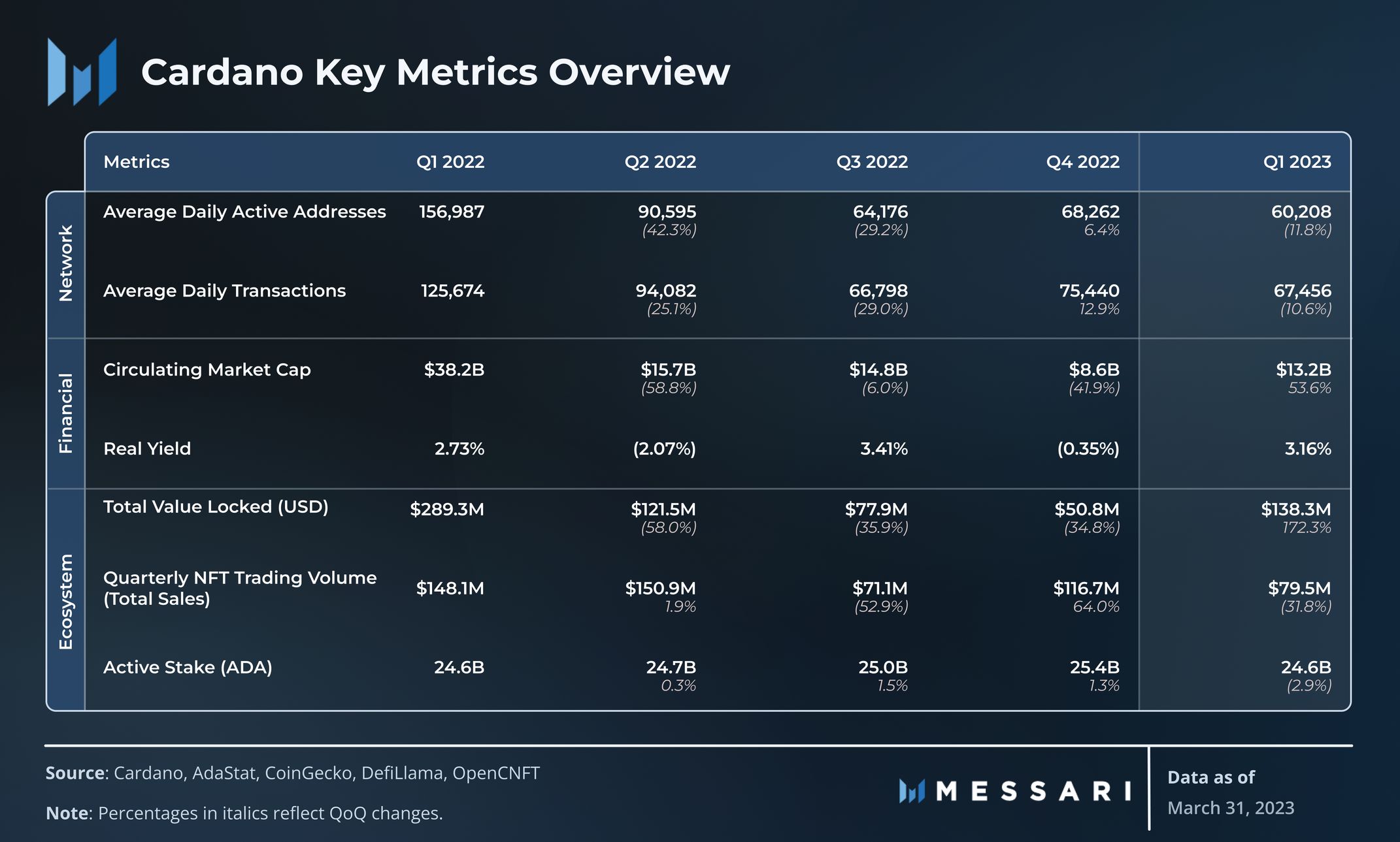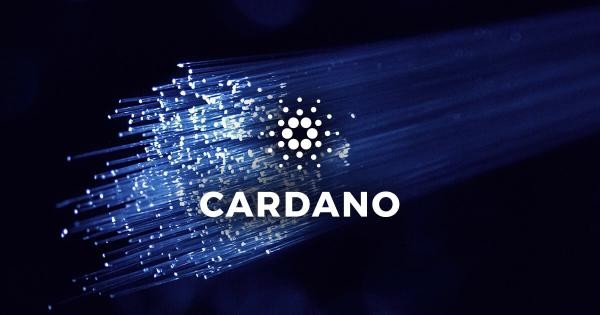What is Cardano?

Description
Cardano (ADA) is a third-gen blockchain for building decentralized apps, led by IOHK and founded by Charles Hoskinson, with unique features like Ouroboros proof-of-stake, 2-layer architecture, academic research focus, and sustainability. With smart contract functionality recently launched, Cardano is a promising DeFi and dApp competitor, with significant adoption and partnerships with governments, businesses, and academic institutions.
Projects
April 7th, 2023 at 1:10 PM PST
What is Cardano?
Cardano (ADA) is a third-generation blockchain project that aims to provide a secure, scalable, and sustainable infrastructure for building decentralized applications (dApps). It was founded by Charles Hoskinson, one of the co-founders of Ethereum, and its development is led by IOHK, a blockchain research and development company. Cardano aims to provide security, scalability, and sustainability to decentralized applications and systems building on top of the blockchain.
Cardano uses a unique proof-of-stake consensus algorithm called Ouroboros, which was developed by IOHK. Unlike other proof-of-stake algorithms, Ouroboros is undoubtably secure and mathematically rigorous, providing a high level of security and scalability to the Cardano network. The Cardano blockchain is divided into two layers: The Settlement Layer, which handles the accounting and value transfer functions, and The Computation Layer, which handles the smart contract execution. Cardano is supported by several entities: Input Output Global (IOG), dcSpark, The Cardano Foundation, EMURGO. Each of these work together to support the network’s development, adoption, and finances while Cardano pushes forward towards the age of Voltaire.
One of the unique features of Cardano is its focus on academic research and formal methods. The Cardano team has collaborated with several universities to develop a rigorous and formal approach to blockchain development, including the use of programming languages such as Haskell and formal verification methods to ensure the correctness of the code.
Another key feature of Cardano is its commitment to sustainability and environmental friendliness. Unlike other proof-of-work blockchains, such as Bitcoin, which require significant energy consumption to secure the network, Cardano's proof-of-stake algorithm requires much less energy and is therefore more sustainable.
Cardano has also recently launched its smart contract functionality, enabling developers to build decentralized applications on the Cardano network. This has opened up a new range of possibilities for Cardano, as it can now compete with other smart contract platforms such as Ethereum, Binance Smart Chain, and Solana.
In terms of adoption, Cardano has been gaining traction in recent years, with several partnerships and collaborations with governments, businesses, and academic institutions. For example, the Cardano Foundation has collaborated with the Ethiopian government to use blockchain technology for improving the country's educational system, while the Cardano team has also announced partnerships with several African countries for implementing blockchain-based solutions for identity, supply chain, and other use cases.
Regarding price performance, Cardano has seen significant growth in recent years, with its market capitalization reaching over $90 billion as of April 2023. However, like any cryptocurrency, Cardano's price is subject to volatility and can be affected by a wide range of factors, including market sentiment, adoption rates, regulatory changes, and technological developments.
All things considered, Cardano is a promising blockchain project with a strong focus on security, sustainability, and academic research. Its unique features and recent developments, such as the launch of smart contract functionality, make it an interesting competitor in the growing decentralized finance (DeFi) and decentralized application (dApp) space. However, as with any investment, it is important to conduct thorough research and analysis, consider risk tolerance, and seek expert advice before making any investment decisions.
Cardano Price Analysis:
In 2017, Cardano introduced its native cryptocurrency, ADA, through a public sale of 25.9 billion ADA tokens that took place from September 2015. Additionally, three distinct organizations that market and develop the Cardano protocol received 5.2 billion tokens. These organizations include Input Output Global (IOG), Emurgo, and the Cardano Foundation, which received 2.46 billion tokens, 2.06 billion tokens, and 648 million tokens, respectively.
When ADA became publicly tradable, its initial price was $0.02. Within just 96 days, ADA experienced a surge in value and reached an all-time high of $1.31, in line with the broader crypto market during the 2017 crypto bull run. However, the price of ADA, like most cryptocurrencies, declined considerably in 2018, eventually dropping back to its initial price of $0.02 by November of that year.
After more than two years, ADA rebounded and exceeded its previous high of $1.31 due to a new bull market cycle that emerged in early 2021. As a result, ADA's price continued to rise, reaching $2.46 in mid-May 2021. Although there was a brief correction between May and July, prices quickly surged again, culminating in a new all-time high of $3.10 in early September 2021.
Update as of April 27th, 2023
The following information is credited to Red Sheehan, at Messari! Link to article is located below.

"ADA’s price rose by 54% in Q1, following the general market uptrend. Cardano rose to the seventh largest cryptocurrency by market cap in Q1 after ending Q4 as the ninth largest. With a quarterly inflation rate of 0.1%, the rate of increase in circulating market cap matched that of ADA’s price almost exactly.
Cardano’s treasury balance grew to 1.21 billion ADA during Q1. The 100 million ADA increase is generally in line with growth from previous quarters. The value in ADA terms increased 9.1% QoQ, but the value in USD terms increased 66% from $278 million to $460 million.
Nominal staking yield on Cardano is generally 3.3% for ADA delegators, although it can vary by stake pool. Real yield is calculated as nominal yield minus inflation to account for any value dilution due to inflation. Any reference to inflation refers to ADA’s circulating supply rather than total supply since ADA’s supply is capped at 45 billion.

Distribution of stake has become slightly more centralized over Q1. The number of pools controlling over 50% of the total stake dropped from 198 in Q4 to 193 in Q1. The number of delegators gradually increased over the past year, with a 2.2% increase from 1.25 million to 1.27 million delegators in Q1. Stake pools, stake distribution, and delegator distribution stayed generally flat.
Stake and delegator distribution were largely unbalanced across total pools in Q1.
- Of the 24.6 billion total stake, the top 193 pools (6.6% of pools) accounted for over 50%.
- Of the 1.27 million total delegators, the top 53 pools (1.8% of pools) accounted for over 50%.
Of the total 2,932 stake pools, 1,128 (38.5%) created one or more blocks during the final epoch of Q1. The most productive stake pools produced 70+ blocks during the epoch, which lasted five days. When looking at cumulative block production, distribution is similarly skewed to a smaller number of overperforming stake pools:
- 691 stake pools have 1,000 or more lifetime blocks created.
- 1,306 stake pools have 100 or more lifetime blocks created.
- 1,652 stake pools have 10 or more lifetime blocks created.
- 860 stake pools have produced zero blocks.
There are nearly 200 stake pools that are both retired and still have ADA pledged to them. Those pools have a combined 50.9 million ADA pledged and delegated to them by 14,300 delegators, worth over $19 million (0.2% of the total stake). By not implementing slashing, Cardano may be affecting how much ADA is still pledged to deprecated pools. If the network did slash ADA on inactive pools, delegators might have more urgency to move their pledge to pools that are actually contributing to the network.
In January, a bug caused ~50% of nodes to go offline for around two minutes of elapsed time due to an internal memory structure issue. The network did not miss any blocks or need to restart, and the bug was swiftly resolved in node version 1.35.5 with the support of the Cardano developer community. All nodes run the same client software, but versions 1.35.4-1.35.7 are each run by at least 5% of nodes. Most nodes, 56% of them, run version 1.35.5. There were other negative side effects of the degraded network performance, such as a double-mint occurring on Cardano naming and routing protocol ADA Handle.
If you haven't read through the article and you're up to here, we highly suggest you finish the rest as it wiill explain everything you need to know related to Cardano this year and where it might be headed."
Red Sheehan. "State of Cardano Q1 2023." Messari. https://messari.io/report/state-of-cardano-q1-2023. April 18, 2023.
ADA Token Allocation
The ADA token has a max supply of 45,000,000,000 ADA and it is distributed to:
- ICO: 57.6%
- Team: 11.5%
- Staking Rewards: 30.9%

:max_bytes(150000):strip_icc()/TermDefinitions_cardano-definition-c5c042ef7b424a5584a95463e00a6f4d.jpg)


